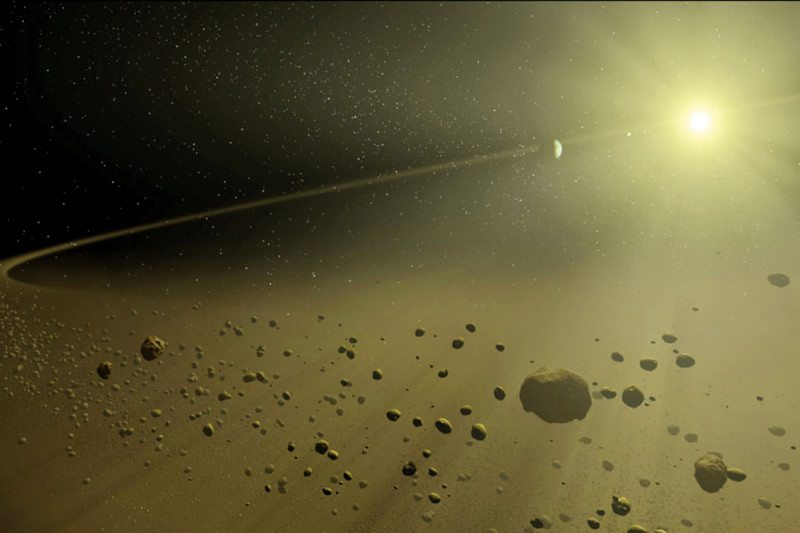The “alien megastructure” star that has been puzzling us for the past few years might have a more ordinary explanation: an orbiting Saturn-like planet, complete with wobbling rings.
In 2015, a group led by Tabetha Boyajian, then of Yale University, found that a star called KIC 8462852 had dimmed several times over a few years in a way they couldn’t explain.
The star had been observed by the Kepler space telescope between 2009 and 2013 as it hunted for exoplanets by staring at a patch of sky. When a planet passes in front of a star, an event called a transit, the light intensity dips slightly and then returns to normal.
Advertisement
But KIC 8462852, since dubbed Tabby’s star, didn’t behave that way, with the amount of dimming varying wildly. Speculation abounded, with explanations ranging from exoplanetary comets to a vast orbiting “megastructure” built by an advanced alien civilisation.
Now Mario Sucerquia and his colleagues at the University of Antioquia in Colombia have proposed another possibility: a ringed planet, similar to Saturn, orbiting close to the star. Such a planet would dim the star’s light in an irregular way during a transit.
First, the rings would block some of the star’s light, followed by the planet, which would dim it further. Then, after the planet passes, the rings would block some light again.
New angle
But because the rings would be at a different angle each time, the small dips at the beginning and end of the transits would be larger or smaller. Without seeing many transits, there would be no obvious pattern to this.
To test this idea and measure the irregularity, Sucerquia and his colleagues simulated a light curve from a ringed planet about one-tenth the Earth-sun distance from its star. They found another effect: the star would tug on the rings, making them wobble. This would make the silhouette of the rings as seen by an earthbound observer even more irregular from transit to transit.
A ringed planet has been floated to explain Tabby’s star before , but that would have required a world many times the mass of Jupiter, enough to make it a small star. This new-found wobble means the planet could be the mass of Neptune.
Keivan Stassun at Vanderbilt University in Nashville, Tennessee, is not convinced the explanation works, as even wobbly rings would create a regular dimming pattern in the star’s light. “To my knowledge, there has not yet been a claim of quasiperiodic or periodic dimming in Tabby’s star, as one would expect with something linked to material orbiting that star,” he says.
Sucerquia says there are other explanations for the weird light curve as well – it might even be a moon breaking up. To further solidify his findings, he is comparing new simulations with the data from Tabby’s star and others.
“The point of this work is to show the community that there are mechanisms that can alter the light curves,” Sucerquia says. “These changes can be generated by the dynamics of the moons or the rings, and the changes in these systems can occur in such short scales as to be detected in just a few years.”
Authors get paid when people like you upvote their post.
If you enjoyed what you read here, create your account today and start earning FREE STEEM!
If you enjoyed what you read here, create your account today and start earning FREE STEEM!
Hi! I am a robot. I just upvoted you! I found similar content that readers might be interested in:
https://www.newscientist.com/article/2144869-alien-megastructure-star-may-host-saturn-like-exoplanet/
Downvoting a post can decrease pending rewards and make it less visible. Common reasons:
Submit